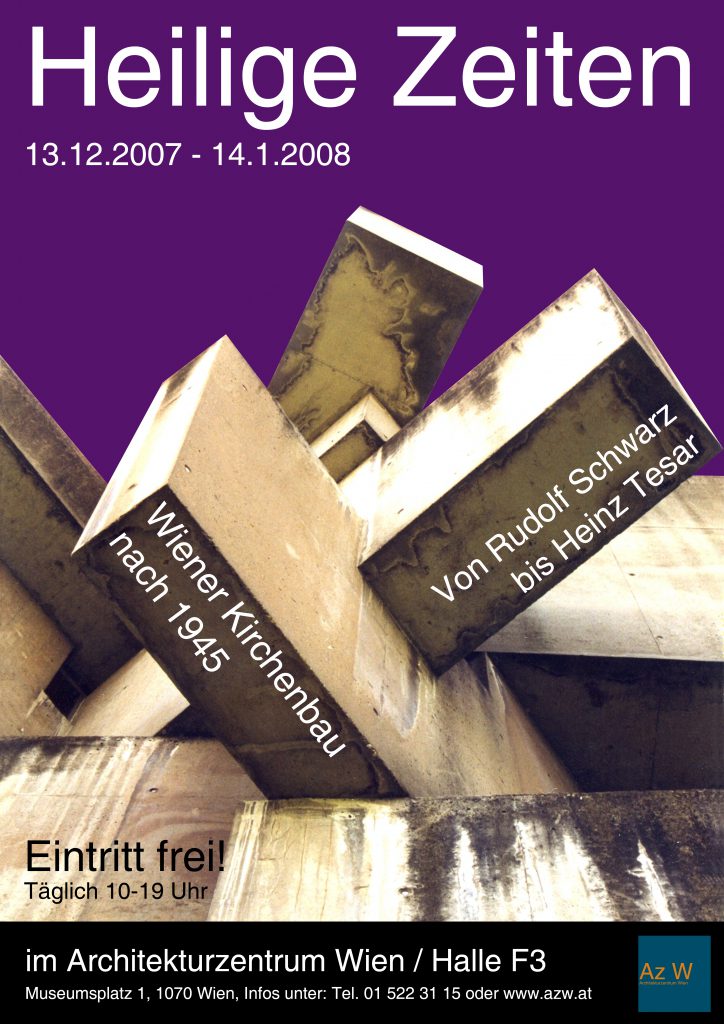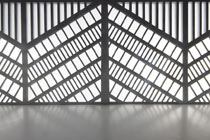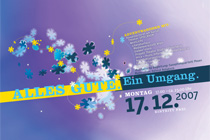Exhibition
Heilige Zeiten
Viennese church building after 1945 — from Rudolf Schwarz to Heinz Tesar

Exhibition poster: Heilige Zeiten
© Architekturzentrum Wien
In cooperation with Vienna University of Technology art history department / model making
Opening
Dietmar Steiner, Director Az W
The Panel
Ann Katrin Bäumler, Andreas Zeese, Art History Institute, building research and conservation
Fridolin Welte, Institute for Art and Design, Vienna University of Technology
Norbert Rodt, theologian
Fritz Gerhard Mayr, architect
Moderated by Bernhard Steger, architect
The Exhibition
The exhibition ‘Heilige Zeiten’ addresses the broad spectrum of architecture in postwar church building in Vienna. In the course of the Church’s liturgical discourse, from the 1950s onwards Christian sacral buildings became a commission of international significance on which blue chip architects like Le Corbusier, Oscar Niemeyer or Egon Eiermann had worked. After 1945, alongside old masters in the sacral buildings sector and established Austrian architects, it was also and primarily a series of young builders who emerged with spectacular projects. In the 1960s and early-1970s in particular, a preoccupation with the guidelines of Vatican II led to a number of experimental spatial and design solutions (e.g. Josef Lackner, Ottokar Uhl, Roland Rainer, Johannes Spalt, Fritz Wotruba). This was partly superseded by directives for traditional spatial concepts (Otto Häuselmayer) from the 1980s onwards.
The exhibition is the result of a student project at Vienna University of Technology under the supervision of Ann Katrin Bäumler, Andreas Zeese and Fridolin Welte. It provides an overview of eight characteristic new churches completed from the 1950s to the 1990s, presented in the form of models to a scale of 1:50. The models allow the visitor to make a clear direct comparison.
Admission free!


